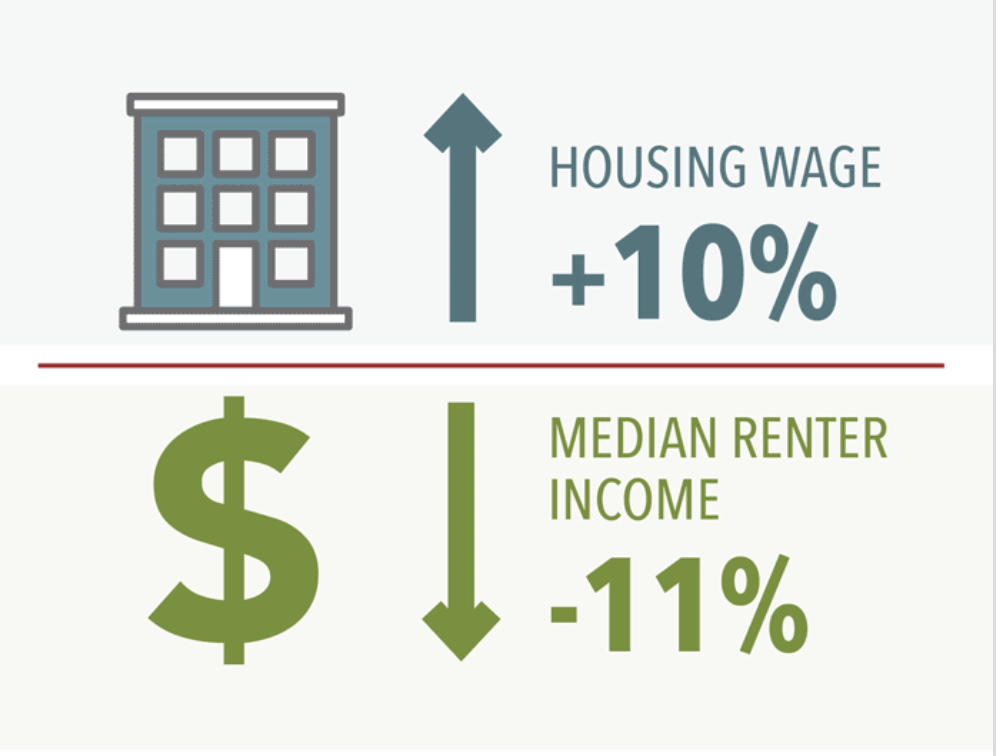

Share
A new report from the Minnesota Housing Partnership (MHP) reveals that there isn’t a single county in the state of Minnesota where a full-time minimum wage worker can afford even a modest one-bedroom apartment. In the Twin Cities, it takes 69 hours per week at minimum wage to afford rent for a single bedroom.
Out of Reach Minnesota 2018 explains that the housing crisis disproportionatley impacts jobs like retail sales, food preparation and housekeeping. The report indicates their challenges ahead as the lowest paid and contingent jobs in the economy, like personal care assistants (PCAs) are the fastest growing.
A comprehensive report released Thursday, January 11th by the Republican-controlled Minnesota House Health and Human Services Finance Committecommittee indicates worker shortages in the care industry amid increasing growth and openings. Data compiled in the report shows that “PCA vacancies increased the most of any occupation in Minnesota over the year, by 3,300 openings.” Furthermore, according to data from the State Office of Employment and Economic Development in, for examples Southeast Minnesota counties jobs with the most significant openings are part-time and do not require a college education.
The MHP report tracks the growing gap between wages and rent, not just in urban areas, like the Twin Cities, but across Greater Minnesota.

—Key findings include:
- Minnesota’s housing wage — the wage necessary to afford a two-bedroom apartment — has jumped 10 percent over the past decade alone to $18.82 per hour. Meanwhile, median renter income declined 11 percent from 2000 to 2016.
- A full-time minimum wage earner can’t afford a one-bedroom apartment in any of Minnesota’s 87 counties. Minimum wage earners have to pay $3,228 more than they can afford per year to cover the rent for a one-bedroom apartment and $5,724 more than they can afford for a two-bedroom.
- In nearly half of all counties (47%) the average renter would need to earn at least $10,000 more per year to afford a two-bedroom apartment. While two-bedroom apartments are out of reach in all Minnesota counties, even one-bedroom apartments are out of reach to the average income renter in 41% of counties.
- Over the next decade, the five positions with the most projected job openingsearn median incomes less than $25,000 per year — $5,000 below the income necessary to afford a one-bedroom apartment and $14,000 below the income necessary to afford a two-bedroom apartment.

